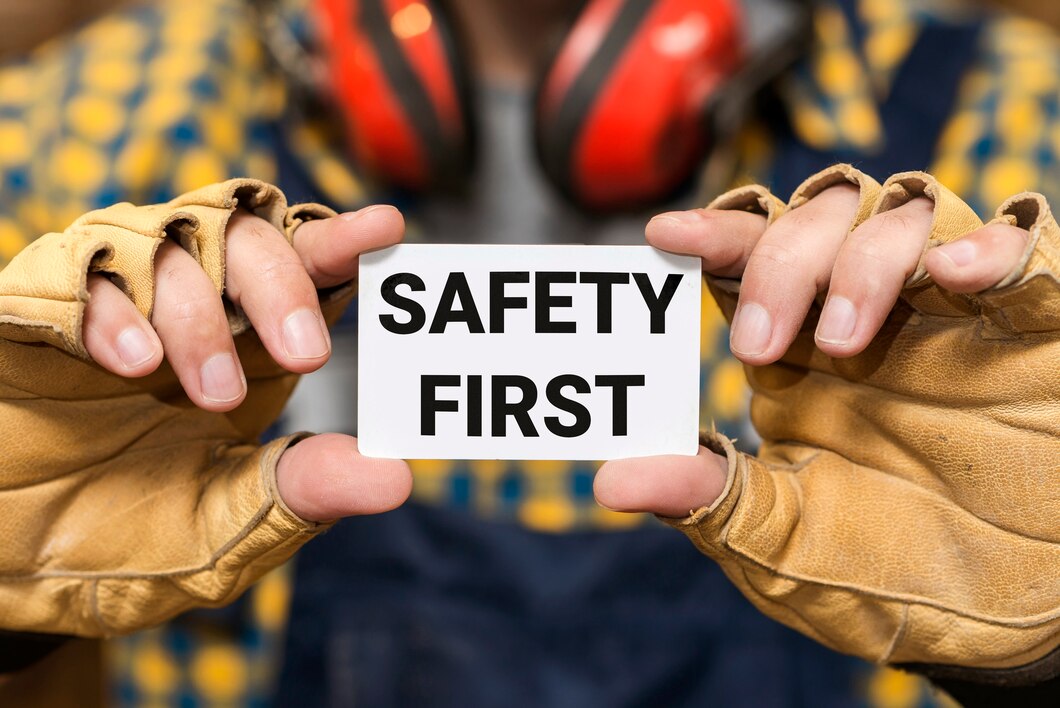Workplace safety is about making sure employees are protected from risks and dangers. It involves finding hazards, fixing problems, and following rules to prevent accidents and illnesses. The International Labour Organization (ILO) reports that nearly 3 million people die each year from workplace accidents and diseases. Many others are injured or become sick because of unsafe working conditions. This is particularly relevant for facility managers, safety officers, HR professionals, and anyone responsible for ensuring a safe and healthy work environment.
This blog will explain what occupational safety is, why it is important, and how companies can create a safer environment. We’ll cover safety management, equipment maintenance, audits, and technology that can help.
What Is Occupational Safety?
In simple words, workplace security means keeping employees safe from harm. It focuses on reducing risks like slippery floors, bad air quality, broken machines, and other day-to-day aspects. It also involves teaching workers how to stay safe and use tools properly. Key areas such as indoor air quality management, HVAC cleaning, and hazardous material handling are crucial to ensuring that workplace safety is not just about physical risks but also the health and environmental safety of employees.
Key Areas of Workplace Safety
To keep employees safe, companies need to focus on several important areas such as:
1. Finding and Fixing Risks
A job hazard analysis (JHA) helps identify risks for each task. For example, in services like soil remediation, there are specific hazards like exposure to harmful chemicals. Proper hazardous material handling and containment are necessary to prevent accidental exposure and maintain safety.
2. Managing Harmful Substances
Jobs involving dust, chemicals, or fumes can be dangerous. Companies can protect workers by using ventilation systems, giving them protective gear, and following safety standards. Maintaining good IAQ by addressing harmful substances in the air is another critical measure. IAQ audits by experts can help identify sources of pollutants and guide corrective actions.
3. Training Employees
Workers need to know how to handle emergencies and use equipment safely. For example, specialized training in hazardous material handling and HVAC maintenance ensures that employees can manage dangerous substances and machinery effectively.
Building a Comprehensive Workplace Safety System
While identifying risks and training employees are critical, creating a sustainable safety culture requires a systematic approach. Here’s how companies can build a comprehensive workplace safety system:
- Get Leaders Involved: Managers should lead by example. When workers see that leaders prioritize safety, they are more likely to follow suit. Strong leadership also ensures that safety practices are embedded within the company culture.
- Track Safety Issues: Use software to track accidents, near misses, and identify patterns. For example, if slips and falls are frequent in one area, it might be time to fix the floor or install warning signs.
- Create Clear Policies: Implement safety policies based on internationally recognized standards like ISO 45001, ensuring clear rules and responsibilities for everyone. These policies should also align with legal requirements and company objectives.
- Hire Certified Vendors: When outsourcing safety-related services, it’s important to hire certified and experienced vendors. Certified vendors specializing in HVAC cleaning, hazardous material handling, and IAQ management ensure that companies meet health and safety standards while reducing workplace risks.
- Follow OSHA Guidelines: Adhering to Occupational Safety and Health Administration (OSHA) guidelines is a must. OSHA provides detailed regulations that help companies create a safer workplace, from managing hazards to conducting proper training.
- Conduct Surveys and Risk Assessments: Regular safety surveys and risk assessments help identify potential hazards and areas for improvement. Engaging employees in these surveys ensures that frontline workers have a voice in maintaining a secure environment.
- Regular Inspections and Audits: Safety audits in the workplace and inspections should be conducted regularly to identify any unsafe practices or equipment malfunctions. By conducting these assessments, companies can mitigate risks before they lead to accidents.
Keeping Buildings and Equipment Safe
Safe buildings and equipment are essential for workplace safety. Regular inspections and maintenance help prevent accidents. This process, often referred to as facility safety management, ensures that all systems, tools, and structures are in good condition to protect employees and prevent disruptions. Here’s how companies can achieve this:
1. Fire Safety Systems
Fires are a major risk in many workplaces. Install automatic sprinklers, fire alarms, and fire extinguishers. Regularly check these systems to ensure they work properly.
2. Inspect Buildings and Machines
Inspections help find problems before they become dangerous. For example, non-destructive testing (NDT) can detect cracks in machines or buildings without causing damage.
3. Use Lockout/Tagout (LOTO) Systems
During maintenance, machines can accidentally start and injure workers. LOTO systems ensure machines stay off until they are safe to use.
Maintaining buildings and tools protects employees and avoids expensive repairs or shutdowns.
Using Technology to Improve Safety
Technology makes workplaces safer by helping monitor risks and prevent accidents. Here are some tools companies can use:
- Wearable Safety Devices: Helmets or vests with sensors track workers’ health and warn them of dangers like toxic gases.
- Predictive Maintenance Tools: These tools analyze data to predict when machines might fail. Fixing equipment early prevents accidents.
- Virtual Reality (VR) Training: VR lets workers practice emergency responses in realistic but, safe scenarios.
Using technology reduces risks and makes workplaces more efficient.
Conclusion: Health and Safety Management
Workplace safety is much more than just following rules. It’s about protecting people, improving operations, and creating a positive work environment. Companies that prioritize safety show employees they care, which builds trust and boosts productivity.
If you want to keep your workplace safe and healthy, EPSCO India can help. They are experts in checking air quality, cleaning HVAC ducts, fire & flood Restoration, controlling contamination and more. Their services make sure workplaces are safe, efficient, and free from harmful pollutants. With their modern tools and skilled team, they help create workplaces that care about both safety and health.

